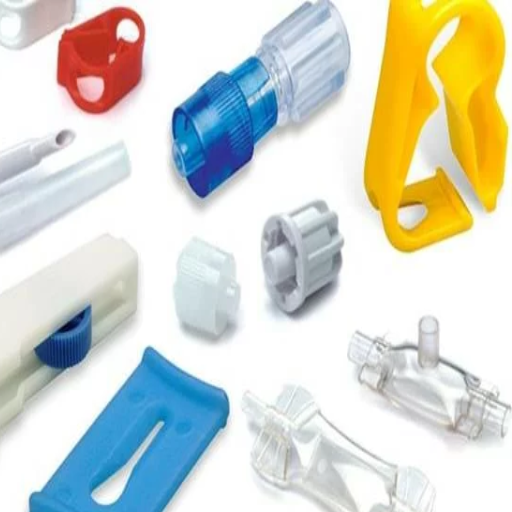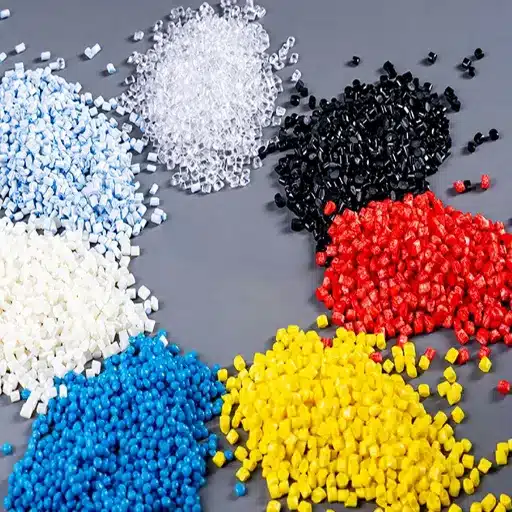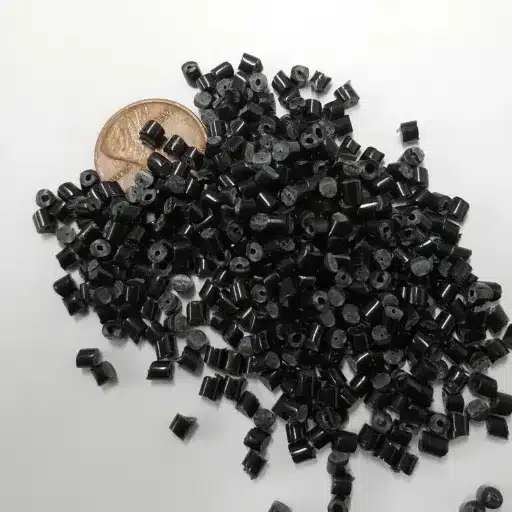It is all about precision, reliability, innovation, and the good old medical plastics for a product to be cutting-edge. From surgical devices and diagnostic items to life-saving implants, selecting the proper medical plastics manufacturer is a crucial decision that underscores product safety, functional compatibility, and adherence to stringent industry standards. This guide intends to equip you with the necessary knowledge to navigate these complexities with certainty. As you finish this article, you will be able to identify the primary attributes for assessing, the top industry certifications to consider, and essential questions to ask any potential supplier. Whether upgrading an existing product line or developing a new device, this comprehensive guide equips you to make informed and strategic decisions that drive your success.
Understanding Medical Grade Plastics
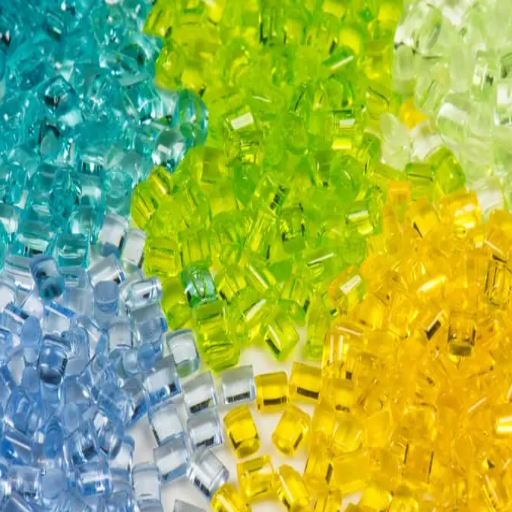
Medical Grade Plastics: An Overview
Designed to meet the stringent requirements of the healthcare and medical industries, medical-grade plastics are a distinct type of material. The formulation of these plastics ensures biocompatibility, durability, and safety, allowing them to be used in applications that require utmost sensitivity, such as surgical instruments, implants, diagnostic devices, and pharmaceutical packaging. They also resist chemicals and withstand sterilization methods, such as autoclaving, while operating under extreme conditions.
The importance of medical-grade plastics was in enhancing patient care and safety. For implants, for instance, such materials must be nontoxic and mechanically strong to work reliably in the human body for extended durations. Additionally, recent developments in polymer science have led to the creation of antimicrobial surfaces that aim to minimize the risk of patient infection in clinical settings. Recent studies have also highlighted the surging growth of the medical plastics market worldwide, driven by increased demand for single-use devices and minimally invasive surgical procedures. This movement highlights the importance of medical-grade plastics in shaping the future of healthcare.
Types of Medical Grade Plastics Used in the Industry
Among medical grade plastics were many materials that offer the ultimate set of properties for use in one or the other application in healthcare. Here are just a few types widely used:
Polypropylene (PP): Polypropylene is regarded as a highly durable and chemically resistant material, making it suitable for use in the manufacturing of medical syringes, specimen bottles, and disposable medical equipment. This low price, coupled with its versatility, makes it an ideal choice for single-use applications.
Polyvinyl Chloride (PVC): PVC is highly valued for its flexibility and clarity in the medical device industry. It is used in blood bags, IV tubes, and catheters because it is relatively easy to sterilize and biocompatible. In recent years, phthalate-free alternatives to PVC have been developed, addressing patient safety concerns.
Polyethylene (PE): Being light and moisture-resistant, polyethylene finds heavy application in packaging for medical devices and prosthetics. The HDPE variety, however, is preferred for implants due to its abrasion resistance.
Polymethyl Methacrylate (PMMA): Widely known as acrylic, PMMA has extensive applications in IOLs used during cataract surgeries, as well as for dental purposes. Their optical clarity and mechanical strength make them suitable for applications in medical devices where visual clarity is essential.
Polycarbonate (PC): Strong and transparent, polycarbonate is mainly used in surgical instruments, medical connectors, and housings for electronic medical devices such as dialyzers. Treatment of high temperatures enhances the sterilization ability.
Acrylonitrile Butadiene Styrene (ABS): Imparting rigidity and strike resistance, ABS is primarily used in non-contact applications, such as medical device enclosures and surgical tool handles. Low cost while offering integrity: This was the most critical thing on our list for consistent work.
Polytetrafluoroethylene (PTFE), more commonly known as Teflon, is a go-to material for advanced chemical resistance and low-friction applications, such as vascular grafts and catheters. Its non-reactive nature offers reliability in taxing conditions.
Meanwhile, the industry is pursuing new bio-based and recyclable plastics to address environmental concerns while also focusing on material performance for long-term implants and next-generation wearables, which will enable safer, more efficient, and sustainable healthcare outcomes.
Key Properties of Plastics for Medical Applications
Medical plastics have gained fame for their outstanding performance in the healthcare industry due to a set of properties that render them indispensable in a variety of applications. These properties include:
Biocompatibility: Medical plastics, such as polyethylene, polypropylene, and polycarbonate, are biocompatible, thereby posing minimal adverse reactions upon interaction with body tissues or fluids. This makes them suitable for implants, syringes, and diagnostic instruments.
Durability and Strength: These materials are designed to withstand significant mechanical stress while maintaining their integrity over time. They exhibit good tensile strength and resist impact in demanding situations, such as those involving surgical instruments and orthopedic implants.
Lightweight Nature: In contrast to traditional materials like metals, medical plastics provide a lightweight alternative without sacrificing performance. This helps make things like prosthetics and wearable technology more usable and portable.
Chemical and Thermal Stability: Plastics used in medical applications typically exhibit resistance to chemical degradation and can withstand sterilization methods such as autoclaving or UV treatment. Thus, this property ensures that hygienic standards are maintained, making it safe to use in reusable medical devices.
Transparency and Visual Clarity: Many medical plastics, including polycarbonates, provide the optical clarity necessary for intravenous tubes or diagnostic containers where clear visualization is required.
Cost-Effective and Scalable: Plastics are commonly much cheaper to manufacture than traditional materials, making them ideal for producing single-use gloves, packaging, and syringes on a large scale. Their wide range of capabilities may also be exploited to create almost any design required by the medical profession.
These characteristics, therefore, make medical plastics a crucial component in present-day treatment, enabling establishments to provide new, reliable, and accessible services and devices across various fields.
Medical Plastics Manufacturing Processes
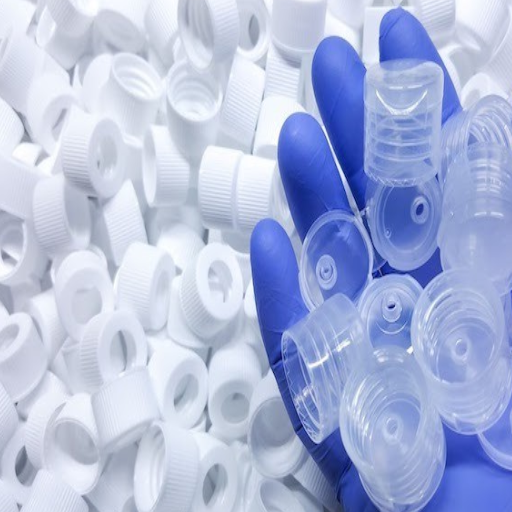
Overview of Manufacturing Capability in Medical Components
Plastic medical components manufacturing uses modern technologies to ensure precision, safety, and compliance with the stringent criteria of the healthcare industry. Injection molding is a critical method because it is preferred among manufacturers for its ability to produce large volumes of complex and finely detailed components with exact tolerances. This process offers a high degree of flexibility, whereby parts can be manufactured to be much smaller or larger, and sometimes more complex in geometry, with exacting tolerances required in medical applications.
Extrusion is another critical step in making medical tubing and catheters. This method enables the hassle-free, continuous manufacturing of uniform yet flexible components, often with specifications such as biocompatibility or sterilizability. The specific extrusion methods include precision extrusion, which encompasses multi-lumen tubing, co-extrusion, and micro-extrusion, making the classification of current medical device needs particularly challenging.
Along with the development of 3D printing, medical plastic manufacturing has undergone significant renovation and modernization, particularly in the areas of prototyping and producing patient-specific implants and prosthetics. Additive manufacturing enables fast production, as minimal materials are wasted, and supports on-demand product customization, which matches individual patient anatomy.
Still, quality assurance must be carried out for all methods with the aid of automated inspection and testing systems. For instance, optical scanners and real-time monitoring are used to ascertain that each component conforms to regulatory and functional standards. Ultimately, it is these capabilities that ensure safe, reliable, and innovative solutions for use in the healthcare industry.
Extrusion and Molding Processes Applied to Medical Products
Extrusion and molding are primary manufacturing techniques for medical products, where the precision and adaptability level meet the requirements of very complex designs. Typically, in extrusion, a medical-grade polymer is forced or drawn into a die to create solid, tubular forms. This procedure ensures that the material maintains a consistent thickness, durability, and flexibility. Changes in multi-lumen extrusion now permit the mixing of several channels within a single tube, with advanced features such as the simultaneous passage of fluids and devices.
Molding, on the other hand, offers a wide range of versatile options for designing intricate three-dimensional components. Injection molding utilizes high pressure to shape exact parts, such as surgical instruments and prosthetics. Advanced molding methods, such as microinjection, are particularly crucial for producing miniaturized and highly detailed parts used in minimally invasive procedures.
With the constant development of technologies such as computer-aided engineering (CAE) and material sciences, manufacturers are ensuring that these processes adhere to the most rigorous quality and safety criteria. Process control is becoming data-driven, with real-time monitoring enhancing product uniformity and conformity. These advances have continued to develop novel ways to support the ever-changing needs of healthcare while maintaining operational efficiency.
Sterilization of Medical Plastics Manufacturing: Importance
Sterilization represents a crucial step in medical plastics manufacturing, ensuring that the device is sterile and fit for use in critical healthcare applications. Medical-grade plastics are often used in environments where sterility is crucial, such as in the manufacture of surgical instruments, implantable devices, and IV components, to name a few examples. Any contaminants or microbes on these plastics can pose a serious threat to patients through infection or compromise treatment results.
To address these concerns, manufacturers employ additional sterilization methods, including EtO, gamma radiation, and autoclaving. Each method’s choice depends on the material involved, the design on which it’s manufactured, and the usage specification. In general, gamma radiation is used mainly for fast penetration sterilization of plastics, while EtO is used for the sterilization of heat-sensitive materials.
Enhancements have been made in sterilization technologies, resulting in improved efficiency. Automated systems, coupled with real-time tracking and validated protocols, are designed to ensure consistent sterilization results. According to industry research, reducing infection rates exceptionally with properly sterilized medical devices is the best way to protect patients in healthcare settings and to earn trust in the dependability of these products.
Medical plastics manufacturers, by prioritizing sound sterilization processes, comply with international regulations and support the long-term success of viable medical technologies. This focus guarantees the capacity of every plastic part to perform its critical role within the complex healthcare ecosystem safely and effectively.
Choosing the Right Supplier for Medical Plastics
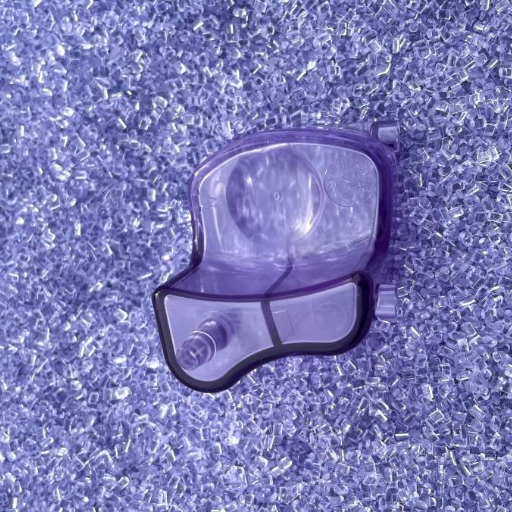
Evaluating Medical Plastics Manufacturers’ Track Record
Ensuring that products are high-quality and reliable begins with examining the medical plastics manufacturers and their history. Partnerships with reputable healthcare organizations or medical device companies prove the ability to meet strict industry standards. Consider certification to ISO 13485, a quality management system specifically designed for the manufacture of medical devices, as a key indicator of maintaining conformity with global regulations.
At the dawn of the twentieth century, having a world-class factory, capital equipment, and innovative ideas in production engineering were clear competitive advantages. Case studies or documented best practices concerning the development and delivery of complex solutions may provide insight into their expertise. Long-standing positive client relationships, meeting delivery deadlines, and having the capacity to scale up production to meet various demands would further validate their capability and reliability.
Finally, transparency concerning their quality control processes or improvements being implemented in state-of-the-art areas of the industry, such as biocompatible materials or sterilization methods, is indicative of a continuous pursuit of excellence. Clients could focus on these considerations to confidently pick a supplier with a proven track record in the medical plastics industry.
Quality Control Assessment in Medical Plastics Production
Quality control in medical plastics manufacturing is a multifaceted process that ensures adherence to accepted safety, performance, and regulatory standards. Material inspection begins with rigorous testing of the raw materials to ensure compliance with medical-grade certifications, including checks for biocompatibility, durability, and other relevant properties. Advanced analytical testing techniques, such as spectroscopy or thermal simulation methods, are used to check material integrity.
Being very precise, manufacturing techniques such as injection molding and extrusion require tight tolerances to ensure consistent product dimensions and surface finish quality. A battery of in-line monitoring systems, such as real-time imaging or laser scanning, is used to ensure that every step of the production process remains within predetermined specifications.
Post-production validation is another critical phase that involves tests of mechanical interventions, chemical resistance, and sterilization efficacy. For instance, tensile strength testing and hydrolytic stability assessment can help indicate the durability and reliability of plastics in medical applications. Such rigorous testing ensures compliance with international standards such as ISO 13485 and the FDA requirements.
Finally, traceability systems enable manufacturers to track every component back to its source, allowing for rapid pinpointing and resolution of problems. This end-to-end transparency goes beyond regulatory compliance and reassures clients and patients that the product meets the highest standards. Together, these measures form a robust framework for providing medically assured, durable, and cutting-edge plastics.
Criteria to Consider When Sourcing for a Medical Polymer Supplier
Selecting the medical polymer supplier is crucial to product quality and regulatory compliance, ultimately impacting the project’s overall success. Factors to consider when making this critical decision include:
Regulatory Competency and Application: An ethical supplier must possess complete competence or expertise in the various regulations and standards, such as ISO 13485 and FDA requirements, within the scope of their work. The materials must adhere to certification applications relevant to your work, thereby ensuring their safety and continuous performance. This reduces the risk and assures that your products will not face any impediment in their way to global markets.
Material Quality and Selection: The supplier must offer a wide range of high-quality medical-grade polymers for specific applications, such as biocompatibility for implants or resistance to sterilization for surgical instruments. Inspect their capability to sustain the supply of materials to meet stringent mechanical, thermal, and chemical property standards that are essential to the working of the separate item.
Customization Capabilities: Some medical applications require craftsmen to custom-make items with specific polymer formulations or design considerations of their own. Assess the supplier’s ability to collaborate on custom solutions, including procedures that utilize specific additives, colors, or enhanced properties, ensuring all requirements of your manufacturing process and end-use applications are met.
Supply-Chain Reliability: The decision involves determining whether the supplier can deliver materials on time to avoid expensive production shutdowns in the event of disputes. A strong supply chain, backed by regional distribution networks and the availability of emergency backup options, guarantees smooth operations even when global disruptions set in.
Sustainability and Innovation: With a greater emphasis on adopting green practices, suppliers offering sustainable choices for polymers, such as recyclable or bio-based materials, would be given priority. At the same time, those suppliers that invest in R&D can provide the latest polymer technology that fits today’s changing industry applications.
Technical Support and Customer Service: From assisting with material selection to troubleshooting during production, a trusted supplier should offer technical support throughout the entire product lifecycle. The whole spectrum of customer support, encompassing prototyping and training, should ensure a seamless working relationship and expedite product development time.
Transparency and Traceability: Ensure that the selected supplier utilizes the most advanced traceability systems, allowing you to track the material and process back to its origin. It instills confidence in the quality and integrity of the polymers and expedites investigation should any concern with the materials arise.
Upon careful assessment of the factors stated above, one can identify a supplier capable not only of fulfilling present-day demand or the timeframe of projects but also of one that has the potential to drive long-term growth and development in the medical device industry.
Innovations in Medical Plastics for Devices
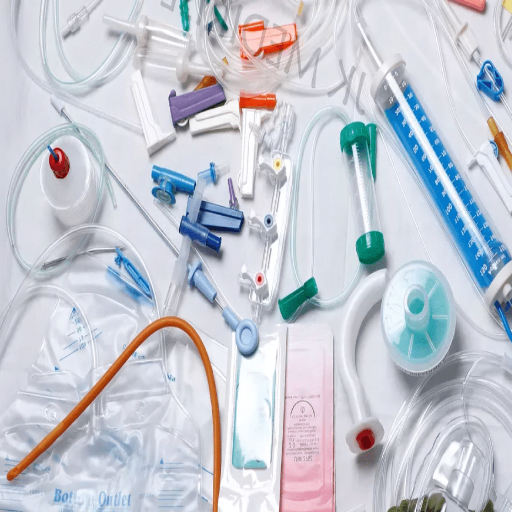
Emerging Trends in Medical Technology and Plastic Usage
With the advent of the latest materials and manufacturing technologies, the medical technology sector is abuzz with innovative uses of plastics. Biocompatible and biodegradable plastics are among the latest trends being offered to the market for medical implants, surgical aids, and diagnostic instruments. Such a process safeguards patients by minimizing the adverse reaction of the material against them and also promotes some environmental conservation practices by reducing treatment waste.
Another key development in polymers is the incorporation of antimicrobial features. This process helps minimize infections in hospitals by preventing microorganisms from growing on the surface of devices, including catheters, IV materials, and surgical instruments. With hospital infections now a global concern, such materials are quickly becoming the industry standard for manufacturing devices.
This way, 3D printing has been iterating on designs and prototypes for medical plastics. Patient-specific implants and prosthetics have become a reality, promising an unheard-of level of precision and customization. Nowadays, with the increased demand for strength, durability, and lightweight properties, thermoplastics like PEEK (polyetheretherketone) and polycarbonate are being preferred as materials in additive manufacturing.
Sustainable issues are also contributing to the development of medical devices. Some of these include the implementation of recycled materials and the adoption of energy-efficient production methods, thereby minimizing the environmental footprint while maintaining strict performance standards. These trends reveal a complex interplay between innovation, sustainability, and the evolving needs of a modern medical system.
Biocompatible Plastics and Their Role in Medical Devices
Depending on their biocompatibility-wet or dry-the plastics can assume a pivotal role in supporting the birth of medical products, communication[]flexibility, precision, and compatibility never imagined before with the human body. Such materials are designed to be in safe contact with tissues, minimizing allergic reactions and compromising their mechanical behavior under various physiological conditions. Thus, an increasing number of surgical implants, catheters, and drug delivery systems employ high-performance polymers, such as PEEK and UHMWPE, due to their strength, durability, and well-documented biocompatibility.
More recently, plastics have been further modified to incorporate properties such as antimicrobial resistance and radiopacity, thereby extending their usefulness across various medical scenarios. For example, antimicrobial additives prevent biofilm formation on devices, such as catheters, thereby minimizing the risk of infection. Additionally, their lightness and aptitude for delicate shaping have earned them an indispensable role in prosthetics and orthotics for patient comfort and functionality. As the global markets for medical devices observe a burgeoning demand for minimally invasive technologies, biocompatible plastics position themselves as a key enabler for the emergence of next-generation healthcare solutions.
Research in the field is generating and developing modern approaches, such as using biodegradable polymers to treat waste and environmental sustainability issues. At the same time, they may further enhance the efficiency of medical care while extending into the broader realm of ecological benefits. By providing an exceptional combination of adaptability, safety, and sustainability, biocompatible plastics undoubtedly transform present-day medicine while evolving in response to the changing priorities of clinicians and patients worldwide.
Future medical plastics in product development
The decline of medical plastics is speedily linked with radical innovation and evolution in the manufacturing process. One such consideration is the further development of 3D printing technologies, which provide fine-tuned solutions for manufacturing medical devices and implants with minimal waste. By using advanced materials engineered for precise biocompatibility, manufacturers can create objects that precisely match the anatomical irregularities of individual patients, which in turn improves treatment outcomes while reducing the risk of complications associated with procedures.
Another major development in this area is the use of smart polymers in medical applications. These materials are adept at responding to stimuli, such as temperature or pH, to offer changes in functionality that may include the dispensing of drug molecules over time or the self-healing of the structure. Such innovations are beneficial for patient care and, of course, help fill the gap for the industry, which is working hard to develop minimally invasive and cost-efficient solutions.
Being sustainable remains a core principle in the industry. Recycling in tandem with bio-based plastics is moving the sector toward a circular economy, reducing dependence on fossil resources and their accompanying environmental impact. For example, recent studies suggest a 50 percent reduction in carbon emissions from the use of bio-polypropylene compared to its traditional counterpart, indicating that these materials confer definite environmental benefits.
Advanced materials and digital technologies continue to have a significant impact on product development. Combining real-time data analytics with materials science, manufacturing can optimize design and production processes more efficiently and cost-effectively without compromising quality standards. This forward-looking approach significantly bolsters the role of medical plastics as instruments for shaping the next generation of healthcare.
Applications of Medical Plastics in the Medical Device Industry
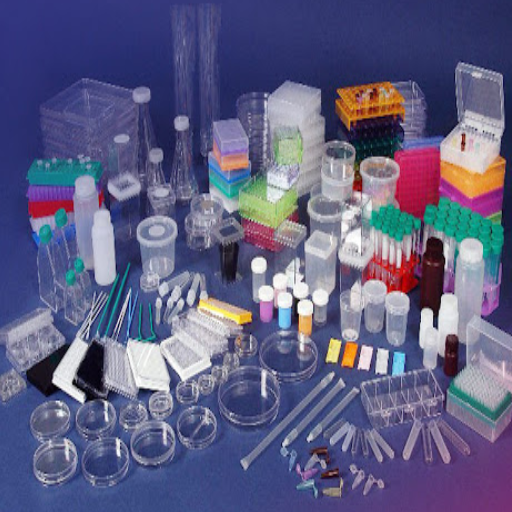
Some Common Medical Devices And Equipment Utilizing Medical Plastics
In the widespread application of medical plastics, I think of standard medical devices and equipment. They ensure safety, hygiene, and proper function for a wide range of applications in healthcare, from disposable syringes to IV bags, surgical gloves, and catheters. In other words, the very nature of these plastics allows them to be lightweight and molded into complex shapes, making them ideal for use in small, intricate devices, such as insulin pens, inhalers, and diagnostic apparatus. These biocompatibility and contamination resistance properties are vital to ensuring that medical devices meet stringent standards for medical use.
The other world of medical plastics lies in more advanced technologies; for instance, for purposes like the very core aspects of an MRI machine or prosthetics requiring high durability and flexibility in their design, a finer type of plastic composite would be used. Plastics are even needed in the creation of cutting-edge methods such as 3D-printed implants or biodegradable stents, where both precision engineering and patient-specific customization are of the utmost importance. The IMF adoption of these medical plastics laid the foundation for cutting-edge therapies, making the same plastics crucial in a multitude of commonplace as well as more sophisticated medical applications.
List of Successful Implementations of Medical Plastics
One remarkable example I encountered involves the international application of medical-grade plastics to prosthetics. Utilizing lightweight yet robust composites has provided high levels of mobility and comfort for end users, i.e., the recipients of prosthetic limbs. It specifically concerns children born with limb differences, where these new materials allow for inexpensive prostheses that can be customized to grow with the child. Plastic materials emulate the flexibility and strength needed to carry out daily activities, one of the radical changes that has once broken the barriers in the realm of mobility and access.
Another case for plastic bioresorbable stents: the case of a landmark in cardiovascular care. Metal stents, the first of their kind, have saved innumerable lives, with newer bioresorbable stents made from special medical plastics making a significant difference in treatment outcomes. Resin stents act by holding the arteries in place during healing, and then safely dissolve, thereby minimizing complications in the long run. I recall one story of a patient who recovered much better, and his entire heart health improved because of this technology-an example of how impactful such developments can be.
Lastly, drug delivery systems utilize plastics for making time-release medication capsules. Such capsules control the rate at which the medicine is released into the body, allowing it to work optimally and promoting better patient compliance. One exciting setup is for chronic diseases like diabetes or Parkinson’s, where drugs can be put in a controlled-release setup to treat steadily and provide a better quality of life for the patient. These cases highlight how medical plastics continue to push the boundaries of what is possible, thereby fostering progress on numerous fronts.
Challenges and Solutions in Using Plastics for Medical Devices
One of the key barriers to using plastics in medical devices is that they must be biocompatible and safe for the patient. Plastics must comply with stringent regulations to ensure they do not cause adverse reactions when in contact with the human body. In addressing the issue, I select only the best plastics, specifically medical-grade plastics that have undergone even greater tests for biocompatibility. In addition, I maintain close contact with regulatory bodies to ensure that safety protocols and certifications are adhered to, which is the foundation for building trust and reliability in the devices manufactured.
Another critical hurdle has been the durability and suitability of plastics in extreme environments, such as sterilization or when used for prolonged periods inside the body. Certain plastics degrade or become brittle, affecting their functionality or posing a risk to patient health. I believe that advanced polymer sciences, to discover and prove materials that resist durability, heat, and chemical attack, would be a worthy solution to pursue. Surface coatings or the blending of materials can further enhance plastic performance, allowing it to retain its effectiveness even in demanding environments.
Another issue is the environmental sustainability aspect of plastic as a health device concern. Single-use plastics have been polluting the waste stream, although they are necessary for hygiene and infection control. With this in mind, I am examining and developing strategies for improved recycling and the potential use of biodegradable plastics. Innovations in this area strike a balance between the need for efficient health solutions and the motivation to minimize environmental impact, thereby moving towards sustainability in the medical device field.
Reference Sources
-
Understanding Your Needs: A Guide to Choosing the Right Plastic Manufacturing Partner – Cent Plastic Mfg
Explores key considerations for selecting a plastic injection molding partner for medical applications. -
How to Select the Right Plastics for Medical Device Parts – Elite Biomedical Solutions
Discusses factors to consider when selecting the right plastics for medical device manufacturing. -
Plastics for Medical Devices and Applications – Protolabs
Highlights the properties of polymers suitable for medical devices, such as resistance to corrosion and high temperatures. -
Top Ten Medical Plastic Producers – BCC Research
A report focusing on leading companies in the medical plastics market and industry growth drivers. -
Medical Plastics Suppliers – Thomasnet
A directory of custom manufacturers of plastic medical components made from various materials. - Top Plastic Pellets Suppliers in China
Frequently Asked Questions (FAQs)
What are the advantages of using medical-grade plastics in the medical industry?
Medical-grade plastics exhibit high biocompatibility and can be safely utilized for various medical applications. Such materials as PPSU and Radel exhibit good wear resistance and chemical resistance. They can handle sterilization cycles without compromising the safety of medical products. Thermoplastics can be molded and shaped easily during production. This ultimately enables the development of reliable medical devices and components that meet stringent industry standards. All in all, medical-grade plastics bring about better technology and safer medical applications.
How do manufacturers of medical plastics maintain the quality of their products?
In medical plastics manufacturing, from the start of production to the regulation of finished products, quality control is established at several levels to maintain the highest quality standards in the product. They would likely hold ISO certification, which demonstrates adherence to the criteria for quality management systems. On the other hand, they conduct all tests for biocompatibility and resistance to various chemicals. Their high-performance plastics ensure durability and performance in extreme environmental conditions. Capabilities often include specialty moldings and assembly to manufacture medical plastic products, ensuring consistent performance. Periodic audits and inspections guarantee product integrity.
What kinds of medical applications employ high-performance plastics?
High-performance plastics have numerous applications in various medical fields, including surgical instruments, diagnostic equipment, and drug delivery systems. These materials are popular due to their excellent properties, such as chemical resistance and wear resistance, which are essential for sterilized devices. Medical-grade plastics such as PPSU should generally be used in components and devices that are under tough conditions. Additionally, these plastics facilitate machining into precise shapes that meet the specifications for medical technology. In general, high-performance plastics, in one way or another, ensure enhanced functionality and safety of medical devices.
What is the process of extrusion of medical-grade plastics?
Extrusion is one of the most popular commercial processes for manufacturing medical-grade plastics. It involves melting the plastic material and pressing it through a mold to create a continuous shape. This process is best suited to obtaining stock shapes that can be further machined into precision components. Custom plastic solutions can be manufactured for various aspects of life sciences engineering, including those applicable to medicine. Controlling extrusion parameters allows manufacturers to control properties such as thickness, density, or finishes. The extrusion process can accommodate practically any thermoplastic, making it essential for the high-volume manufacturing of medical products.
How are plastics for medical devices tested for biocompatibility?
Testing of biocompatibility is a fundamental stage in the development of plastics for medical devices. Manufacturers follow specific guidelines, which may be stipulated by ISO or other organizations, to determine how the plastic interacts with the biological system. The tests involve cytotoxicity tests, sensitization tests, and irritation tests concerning the human body, depending on the material being evaluated. Another example is the long-term evaluation, which must be conducted on an actual medical application to assess the material’s behavior over time. The biocompatibility of plastics, once ensured, can be utilized in various medical applications that often involve direct contact with the patient.
What are the benefits of custom plastic solutions in developing a medical product?
With the development of medical products, custom plastic material solutions offer a myriad of advantages for manufacturers in tailoring materials to specific situations. These solutions may enhance the performance of a medical device by incorporating features such as high wear resistance and chemical resistance. Coordinating closely with clients, manufacturers can tailor products to unusual specifications or incorporate them into existing medical technology. Custom solutions also provide for rapid prototyping, whereby iterations are sped up during the development process. All these advantages ultimately contribute to the rapid marketing of the product without compromising on quality or compliance with industrial standards.

